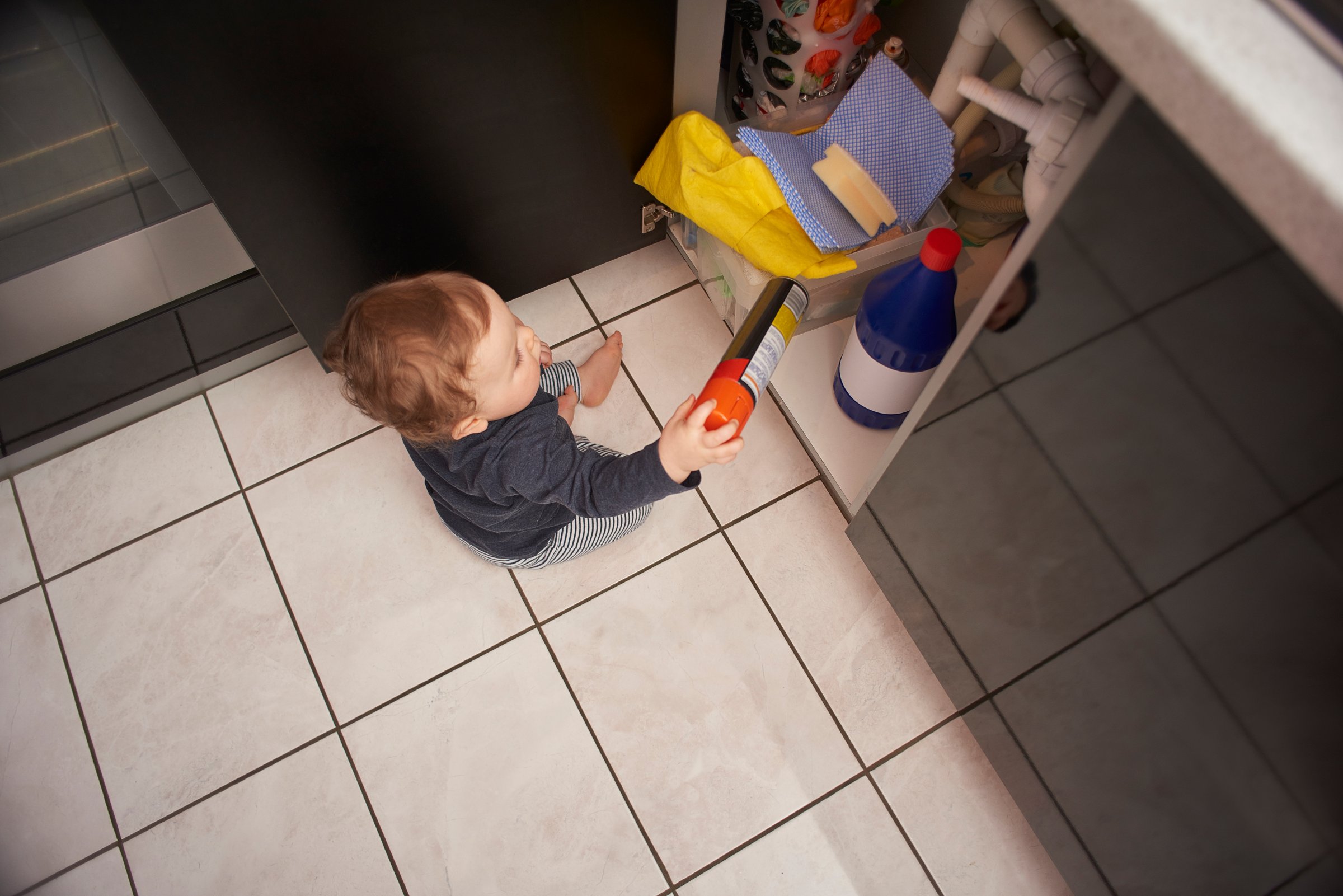
More babies get permanent eye damage from chemicals than people at any other age, says new research.
The results are surprising; previously it was believed that young working adults were at higher risk of damaging eye splashes, because of the environments they work in. But 1-year-olds are twice as likely to suffer eye burns as 24-year-olds, who have the highest rate among adults. They are 13 times more likely to get hurt this way than 7-year-olds.
The new study, which was led by researchers at Johns Hopkins Bloomberg School of Public Health, analyzed data gathered from 2010 to 2013 by the Nationwide Emergency Department Sample. That data encompasses roughly 30 million annual E.R. visits at more than 900 U.S. hospitals. In that time, there were more than 144,000 E.R. visits related to chemical eye burns.
Doctors say that these are among the worst type of eye injury. The longer an alkaline agent, for example, is in the eye, the more damage it does and the eye’s internal structures can often be harmed beyond repair.
Most babies and toddlers suffer eye damage from household cleaning supplies, which are kept under a sink or in a low closet. The spray bottle is a big culprit here, with its fascinating and easy-to-operate trigger action. Injuries usually occurred at home, in families on the lower half of the income scale and more often in the South.
“These are terrible injuries; they occur most frequently in the smallest of children and they are entirely preventable,” said study leader R. Sterling Haring in a statement. “These children do not deal with chemicals on the job. They are injured largely because they get into chemicals such as household cleaners that are improperly stored.”
Read More: Teachers Share the Most Ridiculous Things Parents Have Said to Them.
The good news this is a simple fix. Buy a simple lock for the cleaning supplies closet. Or keep the supplies on a high shelf. Teach your kids to stay away from these chemicals as soon as they are able to comprehend or if they’re young chemists, teach them the value of safety goggles. Businesses could help too, by designing spray bottles which automatically locked after they’d been used.
“Chemical eye burns are a sizeable problem in the United States,” said Haring. “Our research shows that age-specific prevention strategies need to be put in place to keep people of all ages safe from what can be devastating injuries.”
More Must-Reads from TIME
- Donald Trump Is TIME's 2024 Person of the Year
- Why We Chose Trump as Person of the Year
- Is Intermittent Fasting Good or Bad for You?
- The 100 Must-Read Books of 2024
- The 20 Best Christmas TV Episodes
- Column: If Optimism Feels Ridiculous Now, Try Hope
- The Future of Climate Action Is Trade Policy
- Merle Bombardieri Is Helping People Make the Baby Decision
Contact us at letters@time.com